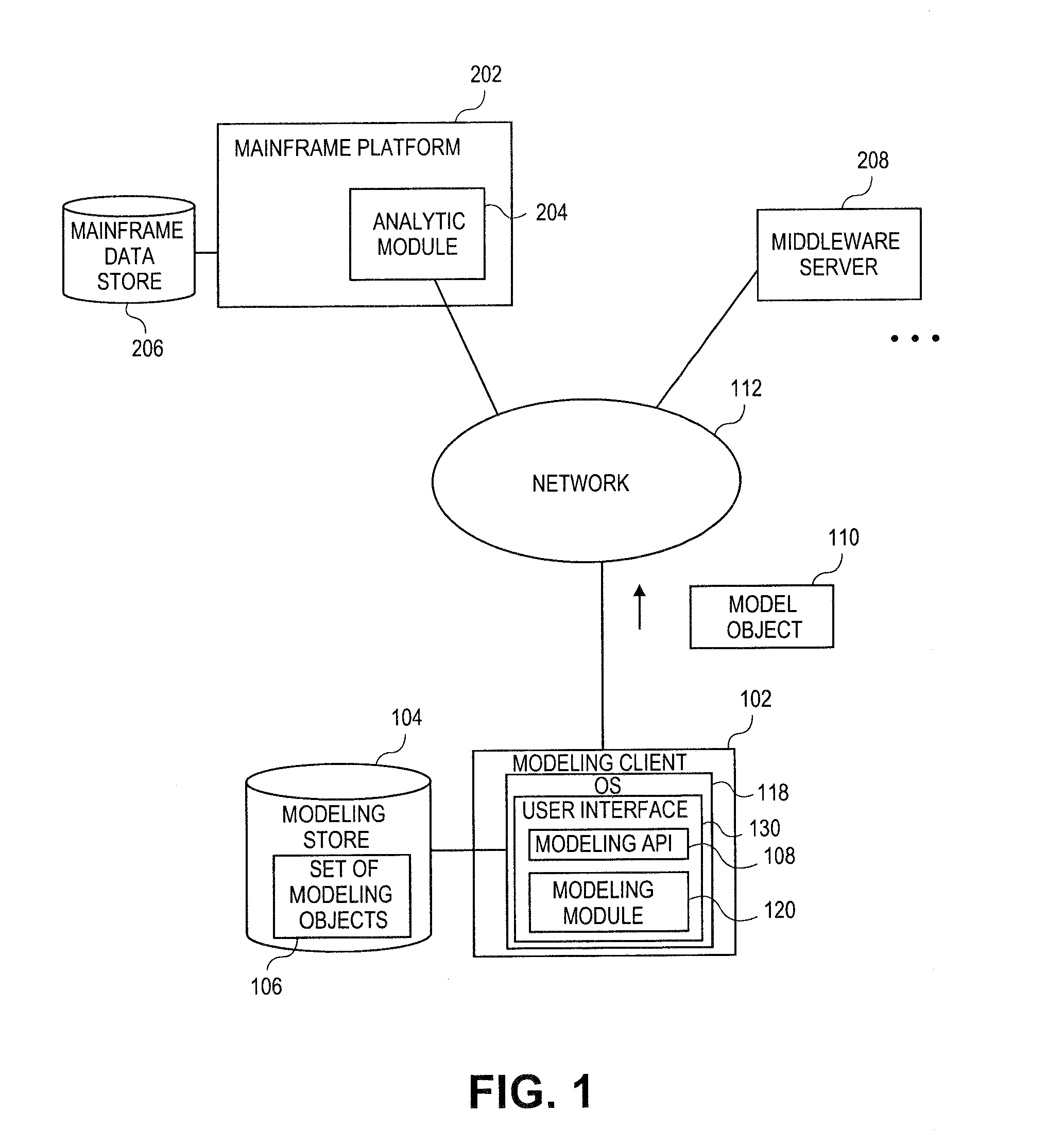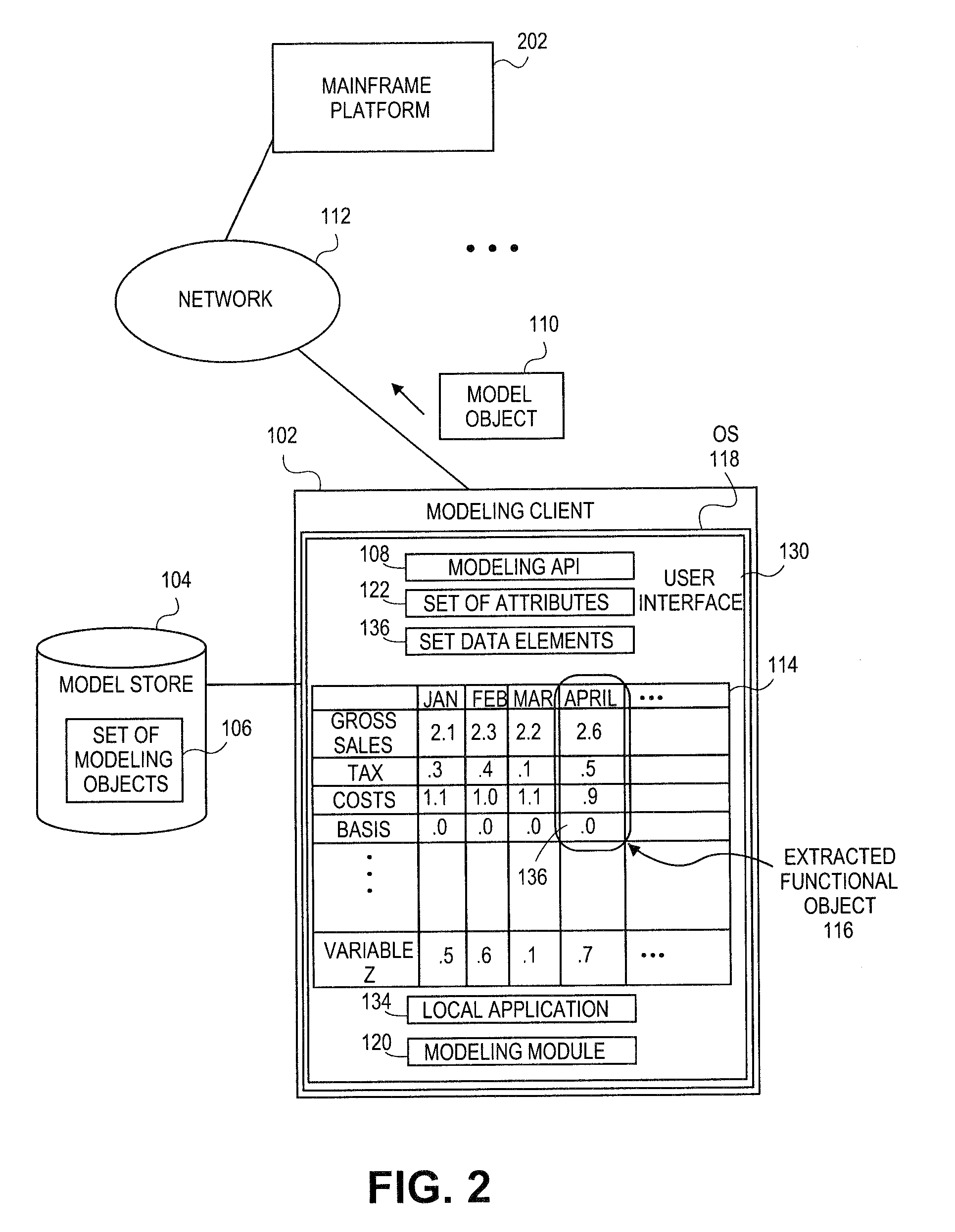Systems and methods for generating dimensionally altered model objects
- Summary
- Abstract
- Description
- Claims
- Application Information
AI Technical Summary
Problems solved by technology
Method used
Image
Examples
Embodiment Construction
[0013]Embodiments of the present teachings relate to systems and methods for generating dimensionally altered model objects. More particularly, embodiments relate to platforms and techniques that can access, extract, and generate modeling objects in a native object-based or object-compatible format. The modeling objects produced via a modeling client or other modeling tool according to the present teachings can encapsulate both source data describing a physical, medical, technical, financial, or other process or phenomena, and modeling attributes that relate the source data to predictive scenarios, specific models, and other features. In embodiments, the modeling objects can be extracted or “lifted” from data sources such as database programs or others, and stored to local storage of a local modeling client.
[0014]The resulting set or sets of model objects can be accessed and manipulated by a modeling module or other logic in the modeling client to scale, resize, or otherwise alter t...
PUM
 Login to View More
Login to View More Abstract
Description
Claims
Application Information
 Login to View More
Login to View More - R&D
- Intellectual Property
- Life Sciences
- Materials
- Tech Scout
- Unparalleled Data Quality
- Higher Quality Content
- 60% Fewer Hallucinations
Browse by: Latest US Patents, China's latest patents, Technical Efficacy Thesaurus, Application Domain, Technology Topic, Popular Technical Reports.
© 2025 PatSnap. All rights reserved.Legal|Privacy policy|Modern Slavery Act Transparency Statement|Sitemap|About US| Contact US: help@patsnap.com



